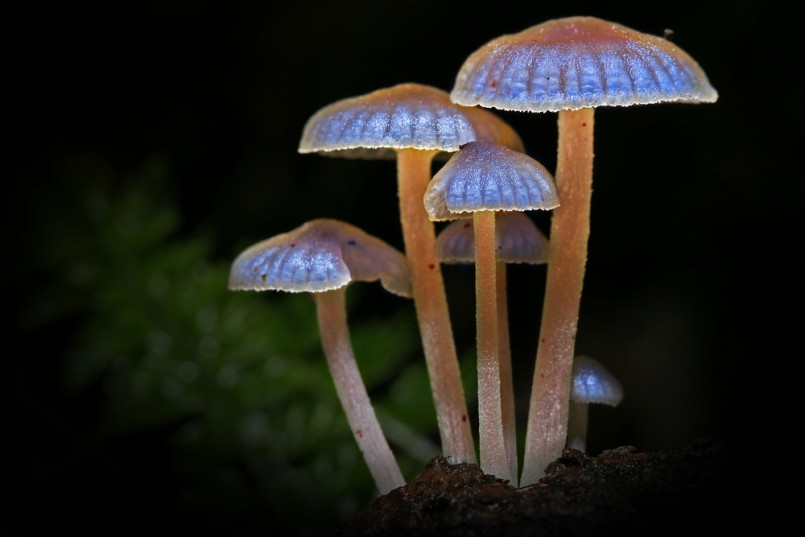Environment
Could glowing fungi light our world?

Image: Shutterstock/Ryan M. Bolton
It seems like something out of science fiction, like the glowing flora and fauna from “Avatar.” But glowing mushrooms do exist in our world. They glow a radioactive green, like those glow sticks that are popular at raves and summer fireworks alike. Glowing fungi have long preoccupied civilizations, like the Australian aboriginals, who thought glowing mushrooms contained powers and were spirits. Yet bioluminescent mushrooms are anything but radioactive or mystical, and they could be the key to lighting the green cities of the future.
The science behind glowing mushrooms
The mushrooms act much in the same way as the common firefly you’d see outside on a warm summer’s night. They both glow by bioluminescence, which is an organism’s ability to glow at night. The current most popular theory as to why the mushrooms do this is so that the glow attracts insects, which can then take the spores of the mushroom to other places for propagation. A study showed that a green LED light similar to the glowing mushrooms attracted beetles, flies and ants, among other bugs.
Further, a study published in June 2015 showed how these mushrooms may glow exactly. The secret lies in fungal compound luciferin 3-hydroxyhispidin, which is different in structure from other luciferin compounds. The compound led to bioluminescence in four different extracts of glowing fungi.
Lighting the world through bioluminescence
So now that researchers know where the secret glow mechanism of the mushrooms is, it’s a matter of harnessing it. One idea floating around is to grow bioluminescent trees, which could be harvested for sheet lighting. Lighting would then be as easy as harvesting renewable wood.
Also, a Kickstarter project is producing glowing plants as a natural, sustainable nightlight. You can even preorder them here. The science behind the glowing plant is completely open source, which means anyone can improve upon the technology and resell it. The Kickstarter project was reserved by 8,433 people, who all raised $484,013 total. Basically, you preorder the seeds and grow the plant yourself.
Another idea for harnessing bioluminescence is to produce entire glow-in-the-dark trees that would effectively replace street lamps. The idea comes from Dutch designer Daan Roosegaarde. Roosegaarde became interested in biomimicry, which is using elements seen in nature to solve design problems.
Roosegaarde then paid a visit to State University of New York, and Bioglow, which is a firm that has been making glow-in-the-dark plants by splicing the DNA from bioluminescent marine life. That proves that glowing mushrooms aren’t the only way to a bright and green tomorrow. An idea of Roosegaarde’s is to produce entire streetlights using this technology that would be collections of these glowing plants, which would look like trees.
Harnessing the power of bioluminescence has been around for years. In 2011, Popular Mechanics covered uses for the tech, including glowing candy, plants that could glow when they need certain nutrients from farmers, bacteria that glow less when toxins are present and rigging disease cells to glow in order to better track illnesses.





0 comments